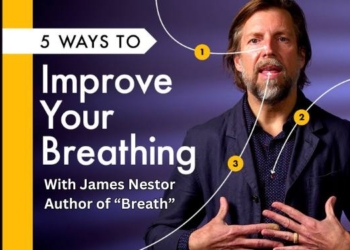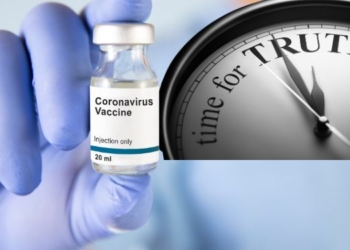Video Source: Low Carb Down Under
By Dr. Joseph Mercola | mercola.com
STORY AT-A-GLANCE
- A primary hindrance to extended health span is the process of atherosclerosis, the hardening of your arteries, which is the No. 1 cause of heart disease
- Your coronary artery calcium or CAC score is a powerful measure of your cardiac disease risk. Having a CAC score of zero in middle age means you have a very low risk (1.4%) of a heart attack in the following decade; above 1,000, your risk of a heart attack within the next 10 years is 37%
- While age is typically seen as the primary risk factor for CVD, the CAC score takes precedence when it comes to identifying your real risk, and transcends other risk factors
- High LDL particle count can be a significant risk factor for CVD, but several factors also play a role and will determine whether high particle count is contributing to atherosclerosis. These include oxidized LDL, damaged glycocalyx, endothelium damage, proteoglycan reactivity, and poor HDL functionality
- Factors that drive atherosclerosis and should be avoided or addressed include glucose spikes, insulin resistance, inflammatory drivers, high blood pressure, oxidative stress, nutrient deficiencies, iron overload, heavy metals, autoimmune issues, infections and smoking
Ivor Cummins is a biochemical engineer with a background in medical device engineering and leading teams in complex problem-solving. On his website, TheFatEmperor.com,1 he offers guidance on how to decode science to transform your health.
In the featured lecture, “Avoiding and Resolving Modern Chronic Disease” presented at the Low Carb Denver 2019 conference,2,3 Cummins discusses the root causes of heart disease and other chronic health problems that rob us of our health span.
His father, who died of heart disease, also suffered from vascular dementia for about 15 years. In total, Cummins believes his father lost about 20 years of his health span — years he could have had, had he had access to better information.
According to the statistics Cummins cites, about 30% of people lived past the age of 70 in 1925. Since then, our life span has improved. Nowadays, a greater percentage of people live well into their 80s and 90s, compared to 1925.
However, Cummins believes that with appropriate nutrition and lifestyle modifications, we could live well past 100, and more importantly, remain healthier far longer than we are now.
As noted by Cummins, there's little point in living longer if you're chronically ill and cannot enjoy your life. He proposes that the primary hindrance to extended health span is the process of atherosclerosis, the hardening of your arteries, which is the No. 1 cause of heart disease.
By implementing the appropriate lifestyle strategies, you can prevent or at the very least stabilize the disease progression, thereby avoiding a life-threatening heart attack.
Understanding your CAC score
In his lecture, Cummins discusses the importance of your coronary artery calcium or CAC score, which he refers to as “the master measure for cardiac disease.”
As noted by the American College of Cardiology,4 a CAC scan “is one way to estimate someone's risk of developing heart disease or having a heart attack or stroke.” The reason for this is because of calcium deposits in your arteries signal buildup of plaque, which over time hardens and narrows your arteries.
The thicker your arteries, the higher your score. Cummins cites research5 showing that having a CAC score of zero in middle age means you have a very low risk (1.4%) of a heart attack in the following decade.
A low score between 1 and 100 raises your risk to 4.1%, an intermediate score between 101 and 400 raises your risk to 15%, and a high score between 400 and 1,000 puts your risk at 26%. Above 1,000, your risk of a heart attack within the next 10 years is 37%.
He also cites data from the Framingham study showing the cardiovascular disease (CVD) risk for seniors with a zero CAC score is nearly identical to that of a 50-year-old with a zero score. Ditto for those with intermediate scores.
In other words, while age is typically seen as the primary risk factor for CVD, the CAC score takes precedence when it comes to identifying your real risk, and transcends other risk factors. Needless to say, if you stop the progression of calcification, you decrease your future risk of CVD, and the earlier you catch it, the better.
The CAC scan takes about 30 minutes and costs between $100 and $400.6 While some health insurance plans may pay for this test, most do not so check your plan details. Ideally, discuss your need with your doctor, who can refer you to a facility that performs the scan. There are also walk-in CAC scan clinics around the U.S.,7 but you'll still need to share the results with your doctor to have him or her interpret them for you.
What drives CVD progression?
To prevent atherosclerotic progression, you need to know what the driving factors are. Cummins compares data of calcification rates in Western white men and those of indigenous cultures.
The differences are provocative, with indigenous Tsimane men having virtually no calcification even into their later years, and even though they have very similar low-density protein (LDL) particle counts (a well-recognized risk factor for CVD and the focus of Cummins' lecture) as white men.
What lifestyle differences may account for these discrepancies? According to Cummins, these indigenous tribesmen have:
- An all-natural, unprocessed diet and healthy omega-3-to-omega-6 ratios
- Low blood glucose and insulin levels
- No diabetes, metabolic syndrome or hyperinsulinemia syndrome
- No hypertension
- No central obesity
Heart-healthy strategies
If you want to protect your heart and live a healthy life well into your retirement, Cummins believes the following factors are the most important. As you will see below (and in his lecture), these factors are all underlying drivers of atherosclerosis. Thus, to avoid CVD you'll want to:
| Avoid glucose spikes and insulin resistance | Avoid inflammatory drivers |
| Maintain healthy blood pressure | Limit oxidative stress |
| Address mineral and vitamin deficiencies | Avoid iron overload |
| Avoid heavy metal exposure and/or addressing heavy metal toxicity | Address autoimmune issues |
| Avoid and address infections | Quit smoking |
Factors that influence the effects of LDL
Cummins presents a model based on the airline industry's airplane crash trajectory. There are many defense systems in place, and failure must appear in each system layer for a crash to occur. The same model can be applied to CVD. In order for a heart attack to occur, more often than not, multiple factors must line up.
You're probably familiar with the theory that high LDL particle count can be a significant risk factor for CVD. Cummins warns that should a dietary change cause your LDL particle count to skyrocket, you'd be wise to investigate further. To assess whether high LDL particle count is actually a problem, the following factors need to be taken into account, as they all play a role:
•Oxidized LDL in your bloodstream — According to Cummins, recent research shows it's damage to the LDL in your blood that leads to oxidized LDL. Oxidized LDL is allowed into your arterial wall through the LOX-1 receptor, thereby contributing to the atherosclerotic process.
Meanwhile, undamaged LDLs “do not appear to partake in the process in a meaningful way,” Cummins says. So, if you have high LDL particle count, you'll want to know whether or not they're oxidized. The list above (of strategies that will protect your heart) are things that will affect the oxidation of your LDL.
•Damaged glycocalyx — The glycocalyx is tiny hair-like protrusions on the inside of your artery that act as a sieve for LDL. It regulates many of the components that determine which particles will be allowed to enter the artery wall.
The paper8 “Hypothesis: Arterial Glycocalyx Dysfunction Is the First Step in the Atherothrombotic Process” details the role of the glycocalyx. According to Cummins, scientists have identified the following factors as being damaging to the glycocalyx, which also matches his list of CVD prevention strategies above:
| Diets high in sugar and processed foods | High blood pressure |
| Oxidative stress | Oxidized LDL (but not native LDL) |
| Smoking | Arterial morphology |
•Damaged endothelium — The endothelium is a single-celled layer inside your artery that manages the damaged LDLs entering the arterial wall. (In his lecture, Cummins explains the two ways in which LDL's can enter your arterial wall.)
Factors that damage your endothelium, allowing LDLs to be driven across it, include the following. Again, most of the items on Cummins' list of things to avoid to protect your heart will trigger these endothelia damaging factors:9
| C-reactive protein | Oxidized LDL |
| Oxidant induction | Reactive oxygen species |
| Lipopolysaccharide ingress from infections and leaky gut syndrome that causes an immune reaction | Tumor necrosis factor |
| Angiotensin II | Interleukin-I 7 |
•Proteoglycan reactivity — Proteoglycans are hair-like structures inside your arterial wall that can trap LDL particles and cause them to oxidize. What makes LDL particles get stuck here?
According to Cummins, the research shows it's not LDL particle size per se that matters most. Heart attack patients, Type 2 diabetics and those with insulin resistance all have higher proteoglycan reactivity, and Cummins believes his list (above) covers most of the issues that these people have.
•Damaged high-density lipoprotein (HDL) efflux — High HDL is typically viewed as being protective, but that's not the whole story. As explained by Cummins, HDL helps remove cholesterol from your arterial wall.
As long as the HDL can keep up with the incoming cholesterol, the buildup is prevented. Problems can occur, however, if your HDL become inefficient at their task. The importance and impact of HDL functionality are detailed in the paper10 “HDL Cholesterol Efflux Capacity and Incident Cardiovascular Events.”
The researchers measured not just the HDL level but the actual functionality of the participants' HDL. Those with highly functional HDL had a significantly lower risk of CVD than those with poorly functioning HDL. “This is the real story on HDL,” Cummins says. So, how do you lower the functionality of your HDL? Fail to address the items on Cummins heart-health list.
A ketogenic diet is part of the answer
In short, the risk factors Cummins lists (high glucose and insulin levels, inflammation, high blood pressure, oxidative stress and so on), all damage your arteries in ways that allow LDL to cause CVD. Yet for the past half-century, the medical community has been near-exclusively focused on cholesterol while largely ignoring the root causes.
Unfortunately, as noted by Cummins, the media has been complicit in creating bad press and misleading information about lifestyle strategies that can effectively address these root causes, such as nutritional ketosis. The “keto crotch” disinformation, for example, was a PR ploy designed to scare people away from the ketogenic diet.
“All of this media has a chilling effect in applying low-carb or keto, and because a majority of our adult population are now essentially diabetic, we need low-carb and keto to fix the real root causes,” Cummins says.
To extend your health span (and not just your life span), Cummins points out you need to do your due diligence as early as possible, which means addressing the root causes as early in life as possible.
A cyclical ketogenic diet can go a long way toward addressing those issues, lowering inflammation, normalizing your blood glucose, insulin and blood pressure and so on. Aside from eating a low-carb diet, Cummins also recommends:
- Eliminating industrial seed oils and processed foods from your diet
- Eat more low-mercury fish and optimize your omega-3 index
- Eat nutrient-dense whole foods, including eggs, butter, and other healthy fats
- Get healthy sun exposure on a regular basis (making sure not to burn)
Diagnostic recommendations
In summary, Cummins recommends getting regular lab work done to track your status. If your CVD risk based on your lab work is really low, you probably don't need a CAC scan.
If your lab work indicates high risk, you don't need a CAC scan, as you need to take action to lower your CVD risk anyway. CAC is best for those in the middle, who want to fine-tune their risk assessment.
If your CAC score is low, maintain a healthy lifestyle and retest in five to seven years to make sure you're still on track. Midrange scores are indicative that changes are needed if you want to lower your CVD risk. If you haven't already implemented the prevention strategies listed earlier, now's the time.
If your score is high, Cummins recommends following up with an expert assessment of more comprehensive blood panels — such as A1C, GGT, ferritin, homocysteine, and others — to pinpoint where the problem lies.
In the case of a high score, you may want to do another scan in about two years to get an idea of what your trajectory is — are the changes you're making producing the desired results? If not, what may you be doing wrong, or what have you failed to address?
A high score also means you have little room for cheating — you'd be wise to implement as many healthy lifestyle strategies as possible, and be strict about maintaining them.
Just remember, your body has a remarkable way of self-healing, given half the chance, and as Cummins notes, we now know a whole lot more about what's required for good health than we did in decades past. The key is to implement this knowledge.















![Everything You Ever Wanted to Know About 9/11 Conspiracy Theory in Under 5 Minutes [VIDEO] | by James Corbett](https://consciouslifenews.com/wp-content/uploads/2018/09/911-a-conspiracy-theory-120x86.jpg)
